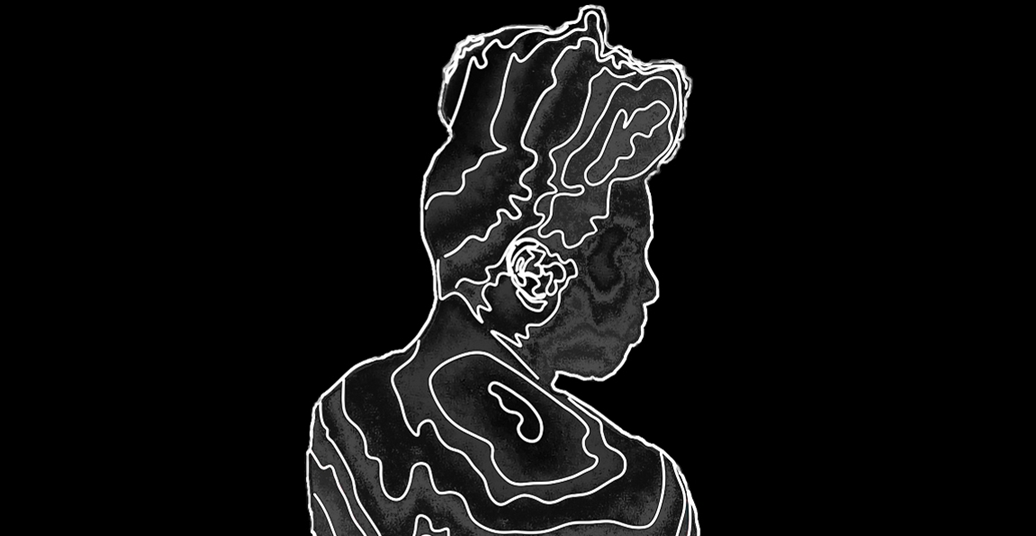Zwoisy Mears-Clarke presents a moving and thoughtfully crafted work “Worn & Felt” at the Sophiensaele’s Hochzeitsaal.
Ground Rules
It is one of those breezy spring evenings, when the sky feels tall and light, the wind easy, and cool, fresh smells are everywhere. A group of twenty of us or so are sitting on the third floor of the Sophiensaele, munching on bread sticks and sipping lemon water under the big windows as we await our six-thirty performance. But already things are different: in lieu of programmes, two posters with the names of the team members are plastered on the door, as well as several pairs of headsets through which we can listen to Zwoisy Mears-Clarke, the creator of this evening’s work, list and thank the creative and production teams. From the start, there’s an inclusiveness and a thoughtfulness to the way things are put together.
As the half hour strikes, Mears-Clarke appears with a group of five performers, and begins “Worn & Felt” by breaking down a few ground rules for the evening. You might think this could come across as pedantic, but it doesn’t at all. It’s merely helpful in an age when the rules of one performance can be so different from the next. Mears-Clarke tells us that we are going to go into an almost totally lightless room, and will physically witness the performers; that we—or rather a group of four of us—will stick with one performer for the entire evening; that we will touch them gently, should not put weight on them, refrain from pulling or pushing them, and not touch them in their private areas, specifically the breast, chest, groin, or buttocks. Specific, simple, clear. But Mears-Clarke, who stumbles over his German, and laughs at his own little mistakes, is charming and lighthearted about it: “If you do accidentally touch someone,” he tells us, “don’t worry. We’ll move your hand to another place.” Dedicating this evening’s performance to a Colombian activist, we are invited to give our own dedication. So, feeling stimulated, a little bit frightened, and yet, in good company, we follow our performer-leaders, hand by hand, into the dark.
The Dark
The dark is so full of sounds, of smells, of hesitation from our uncertain feet and suspicious ears. I feel hyper-alert, and my three fellow witnesses seem to feel the same. The performer we are following guides us to a specific place in the room, where we begin to feel their body, the texture of the fabric they wear, their hair, their skin. They shake occasionally. At times it feels as though they want to throw us off or away, at other times the vibration seems to be a sensing of space. But, as we are later reminded, it isn’t about us. We are there to witness. And this becomes clearer, as mid-way through the performance, the performers guide us to the wall where they form a line—still in darkness—and begin speaking. At first it is difficult to hear what they are muttering, but soon it becomes clear. A flow of pejoratives pierce and rot the air. My instinct is to move away; a hand on the back seems so ineffectual, and even wrong (who am I to give them any weight at such a moment?); the outer rim of my foot finds the outer rim of theirs; I try to be near, to be there, without actually supposing I can do anything. Questions of what it means to witness, to assist, to listen, to be active or passive, and to know what is needed and when all arise in my mind to trouble and confuse me. I try to stay present.
The shaking in the room—from our performer and others—increases. We move around the space, but when we finally anchor ourselves in a fixed location again, others are still moving about. A performer’s skull lands painfully on my collar bone as she cries out and lunges forward with her group. But eventually, we all slide into stillness. We let go a little. But we stay near, listening, ready, active.
Talk Back
Ten minutes later we are sitting together again in the room with the big windows, drinking tea under a darkening, but still blue sky. Mears-Clarke explains how this work came out of thinking about how to involve emotion in anti-racism activism (the one thing neo-Nazi’s and POC groups share, Mears-Clarke points out, is rage), reading black feminist theory, and trying to find a way to put the experiences and structures that he read about into practice. Restorative justice and finding growth from an “engagement with racist residue,” he explains, are methods which do not shun an act or its perpetrator, but rather try to deal with all sides of the story until a community can move on together. They rely on listening, and for a collective patience and persistence to remain—or to return—until people hear one another.
Throughout the piece, there are subtle sonic cues for the performers to move from one part of their score to the next. I question how this structure works, not least in relation to our touch—does our participation not communicate or influence anything? But it isn’t about us, Mears-Clarke answers. It is about being witness to the story and the pain of someone else, it’s about listening, it’s about being there. As a beating, feeling body, it’s hard not to want to “make things better” in the moment, to fix things, to solve things. The bigger lesson, however, about how we might listen—auditively, spatially, emotionally—to those around us and to those unfamiliar to us is a much greater gift.




